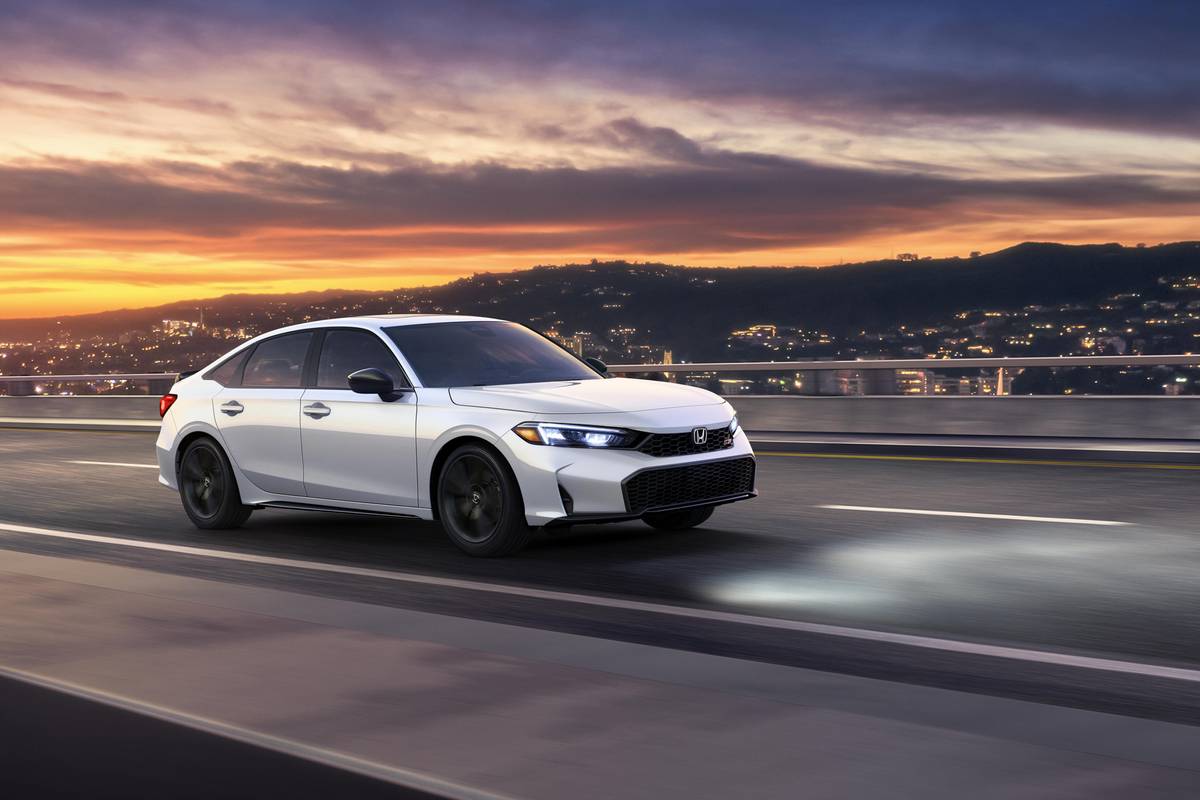Boston.com's view
If, in the auto business, competitors invading your turf can be seen as a virus spreading into your space, then Lexus has just the Rx.
It was only five years – and a whole new ballgame ago – that Toyota’s luxury division introduced the Lexus RX 300. It was a 3.0-liter, moderately powered, elegantly designed and appointed vehicle for a nascent niche: the luxury SUV.
And if imitation is the sincerest form of flattery, consider that we now have Tiger Woods pushing the Buick Rendezvous as General Motors tries to take Buick upscale a la BMW; that the roads are now filled with tens of thousands of luxury sport-utes such as the Acura MDX, Volvo XC 90 (folks are waiting in line to buy this one), Cadillac SRX, Nissan Murano, and Infiniti FX45.
The luxury SUV has grown so fast in popularity that manufacturers expect to soon be selling more than half a million a year.
While many luxury SUVs are capable of decent off-road performance, no one, including the manufacturers, pretends that that will be their primary or, in many cases, even tertiary use. No, these will haul adults and families in comfort on their appointed rounds: shopping, vacationing, to ballgames, and soccer games.
The new Lexus RX – dubbed the 330 because of its bigger engine – is a whistling, smooth reentry into this niche for Lexus.
The previous RX, the 300 – had a 3.0-liter V-6 engine that produced 220 horsepower and 222 lb.-ft. of torque. It was mated to a four-speed automatic transmission that, even with those modest power numbers, seemed at times to linger too long in each gear as it shifted up.
The new engine – 3.3 liters, 10 more horsepower, 20 lb.-ft. more torque – feels more powerful than just those 10 ponies. That may be because it is now hooked to a five-speed automatic, and that extra torque starts down low in the shift pattern and holds right up through all gears. It makes for a far smoother, carefully ratcheted ride – and I’m not saying the RX 300 was a bad thing. This is just great refinement of an already good product.
And in a remarkable display of evolving engine technology, this bigger engine gets better gas mileage than its predecessor, the 3.0. The previous engine was rated 17 city/24 highway, which would give you just over 20 miles per gallon in mixed driving. Driving the RX 330 – in the hills of New Hampshire, on the commuter trail that is Interstate 93, and the Southeast Expressway, I got 22.1 miles per gallon.
That’s impressive because, along with a bigger engine, the RX 330 is a bigger car. Its wheelbase has been stretched by about 4 inches, its body is a full half-foot longer, it’s an inch wider, and half an inch taller.
It can be had with an optional air suspension system – Porsche is doing it with the Cayenne, Audi did it with the Allroad – that can be raised 8.3 inches off the ground for muck and mire, drops an inch below that for normal travel, another half inch for high -speed travel, and more than an inch below normal for climbing in and out or loading groceries.
And when you are talking high-riding SUV – and both the sense and the fact are that this is a top-heavy vehicle – every half inch closer you get to the ground at speed is an important drop in the center of gravity.
Even without this system (it was not in the test vehicle), this is an SUV that has – other than the high ride – no sense of truck about it. Where other high rigs might roll in corners, nose dive at braking, lift at takeoff, the RX 330, with the nifty, strong engine pulling with a guttural rumble, sits flat, quiet, and smooth. No body roll, no dive, no lift. It is the rare SUV in which you can forget (and safely so) that you are driving an SUV.
Adding to its stability is an updated skid control system that monitors all four wheels and, when problems are detected, shifts torque fore and aft as needed. That will fix understeer (plowing), oversteer (your back tries to pass your front – not a good thing when it’s unplanned) and sliding.
And Preston Tucker, don’t do a spin here, but the RX 330 has optional moving headlights. At speeds above 10 miles per hour, they turn when the steering wheel turns, illuminating the curved path the driver intends to follow, rather than the straight path fixed lights would stalk. (this system, along with the air suspension, 18-inch wheels, and the accoutrements of a lavish luxury package would run about $5,500 extra).
Outside, the RX 330 is an aggressive looking vehicle in a class where many of these cars look, frankly, the same. Picture a big wedge of cheese on its side, its front end chopped well back from the point. There is your modern, midsize, luxury SUV.
The RX 330 – and you can still confuse it with other competitors – is helped in distinguishing itself with a slight cab forward look and a sharply sloping nose. It’s got the requisite slab sides of this niche, but its rear air foil sets it off with a sharp brow, and huge, clear rear taillights give it a distinct appearance from behind that not everyone will like.
From inside, the effect of big glass all around and a healthy sunroof give the feel of a cavernous greenhouse.
The seats are well bolstered and firm where they should be. It is a car in which you could take comfortable, effortless long rides. Wood and metal appointments are understated yet impart their sense of luxury.
The rear seat splits 40/20/40 allowing for all sorts of combinations of seating and gear (skis, snowboards, fly rod right up the middle). In addition, it has nearly a half foot of forward and backward travel, again allowing for extra passenger room or extra cargo space.
Subtle, luxurious, smooth, quiet, honest to its intent, the RX 330 is what many folks really want (as opposed to think they want) in an SUV.
Nice touch: The optional back-up camera that displays what’s behind you in a screen on the dash. Wonderfully clear, used with confidence. And if you don’t think seeing directly behind is ever a problem, try this experiment: Take a box about the height of a sitting child and place it 5 feet behind you car. Get into your car and try to see it in the rearview mirror. Move it back at 2-foot intervals until you can finally see it. It will shock you how far back you have to go for the rearview to pick it up.
Annoyance: Why the multiple-step process for adjusting the front seat heaters. Push a button on the dash to pop it out. Then turn it. Then push it again to stow it. A simple, fixed dial would do the trick.
Latest news



